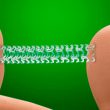In Latin America and the Caribbean, thousands of people lack medical insurance and economic resources to obtain access to a diagnostic cardiovascular procedure and/or percutaneous therapy should they need it. The primary purpose of SOLACI’s SOLidario (which means solidary in Spanish) program is to grant these patients access to these procedures in renowned medical<a href="https://solaci.org/en/2016/10/11/solaci-solidario-the-program-helping-those-who-need-it-the-most/" title="Read more" >...</a>
Are Pharmacoinvasive Strategy and Primary PCI Comparable?
The Strategic Reperfusion Early After Myocardial Infarction trial and the French Registry of Acute Myocardial Infarction 2015 suggest that pharmacoinvasive strategy compares favorably with primary percutaneous coronary intervention (PCI). This study compared the impact of pharmacoinvasive strategy with the impact of primary angioplasty in real-world patients admitted with acute coronary syndrome with ST-segment elevation. The<a href="https://solaci.org/en/2016/09/26/are-pharmacoinvasive-strategy-and-primary-pci-comparable/" title="Read more" >...</a>
Procedural Complexity Affects Decision-Making Regarding DAPT Duration
Much of the speculation around the way of individualizing dual antiplatelet therapy (DAPT) duration after coronary angioplasty has focused on clinical parameters (e. g., diabetes), but a new study published by the Journal of the American College of Cardiology (JACC) and presented at the last European Society of Cardiology (ESC) Congress warns about anatomical factors as<a href="https://solaci.org/en/2016/09/22/procedural-complexity-affects-decision-making-regarding-dapt-duration/" title="Read more" >...</a>
Deferring Lesions by FFR in ACS: Yes or No?
Deferring treatment through angioplasty in non-ischemic lesions by fractional flow reserve (FFR) is associated with excellent long-term prognosis in patients with chronic ischemic heart disease. FFR is beginning to be used for clinical decision-making in patients with acute coronary syndromes, and its long-term effect on stable chronic patients has not been established. This<a href="https://solaci.org/en/2016/09/21/deferring-lesions-by-ffr-in-acs-yes-or-no/" title="Read more" >...</a>
Xience V: Safe in “Real-Life” Bifurcation Lesions
Courtesy of Dr. Rodrigo Abreu. INTRODUCTION Bifurcation lesion treatment has evolved considerably in the last years: from balloon angioplasty (with high occlusion and restenosis rates) to bare metal stent angioplasty (with a procedural success around 86% and major adverse cardiac events [MACE] at 1 year around 32%). The subsequent emergence of drug-eluting stents (DES) reduced<a href="https://solaci.org/en/2016/09/09/xience-v-safe-in-real-life-bifurcation-lesions/" title="Read more" >...</a>
Current Bare-Metal Stents: Similar to DES in the Very Long-Term
The largest randomized trial in history found no difference in the primary endpoint of death and nonfatal infarction between current conventional stents and drug-eluting stents at over 5 years in patients with stable or unstable coronary disease. As expected, NORSTENT did find a difference in revascularization rates between both groups. This study presented at the<a href="https://solaci.org/en/2016/09/07/current-bare-metal-stents-similar-to-des-in-the-very-long-term/" title="Read more" >...</a>
BVS: Safe and Effective in the Infrapatellar Area
Courtesy of Dr. Carlos Fava. Drug-eluting stents (DES) have shown mid-term benefit in lesions below the knee (BTK) by reducing the rate of acute occlusion and restenosis in type A and B lesions. However, failure to recover the self-regulatory functions of the local vessel could hinder future revascularization. Drug-eluting bioresorbable scaffolds (BVS) could be a solution to this problem.<a href="https://solaci.org/en/2016/09/02/bvs-safe-and-effective-in-the-infrapatellar-area/" title="Read more" >...</a>
Anticoagulation and PCI: How Long Should Triple Therapy Last?
The aim of this study was to compare clinical outcomes in relation to the duration of triple antithrombotic therapy in patients with indications for oral anticoagulation undergoing coronary angioplasty. The optimal period for the prescription of these three drugs has not been studied. Between 2009 and 2013, 8772 consecutive patients undergoing coronary angioplasty were included<a href="https://solaci.org/en/2016/08/30/anticoagulation-and-pci-how-long-should-triple-therapy-last/" title="Read more" >...</a>
Beta-Blockers for Revascularized Patients: To Prescribe or Not?
This study examines predictors and outcomes associated with the prescription of beta-blockers at discharge after a successful coronary angioplasty in patients with stable chronic angina WITHOUT prior history of acute myocardial infarction or heart failure. The benefit of beta-blockers in patients with acute myocardial infarction or systolic heart failure is well documented. However, their<a href="https://solaci.org/en/2016/08/23/beta-blockers-for-revascularized-patients-to-prescribe-or-not/" title="Read more" >...</a>
DES in primary PCI: The Best Option?
Courtesy of Dr. Brian Nazareth Donato. The relative safety of drug-eluting stents (DES) and conventional bare-metal stents (BMS) in primary angioplasty (percutaneous coronary intervention, PCI) in patients with ST elevation myocardial infarction (STEMI) is still subject of debate. A search was carried out using Medline, CENTRAL, EMBASE, TCTMD and Cardiosource. There were 9673 patients included,<a href="https://solaci.org/en/2016/08/10/des-in-primary-pci-the-best-option/" title="Read more" >...</a>








